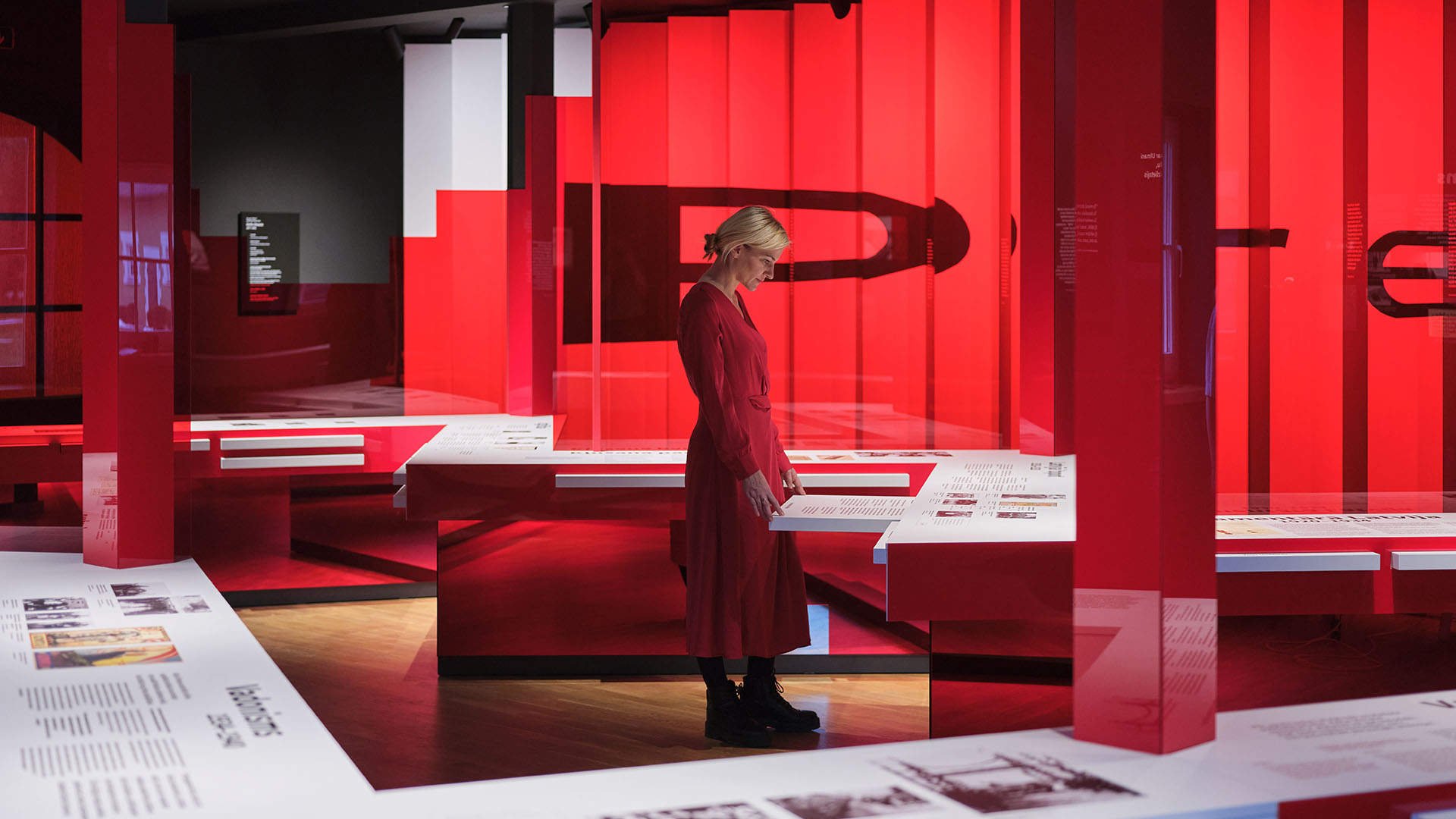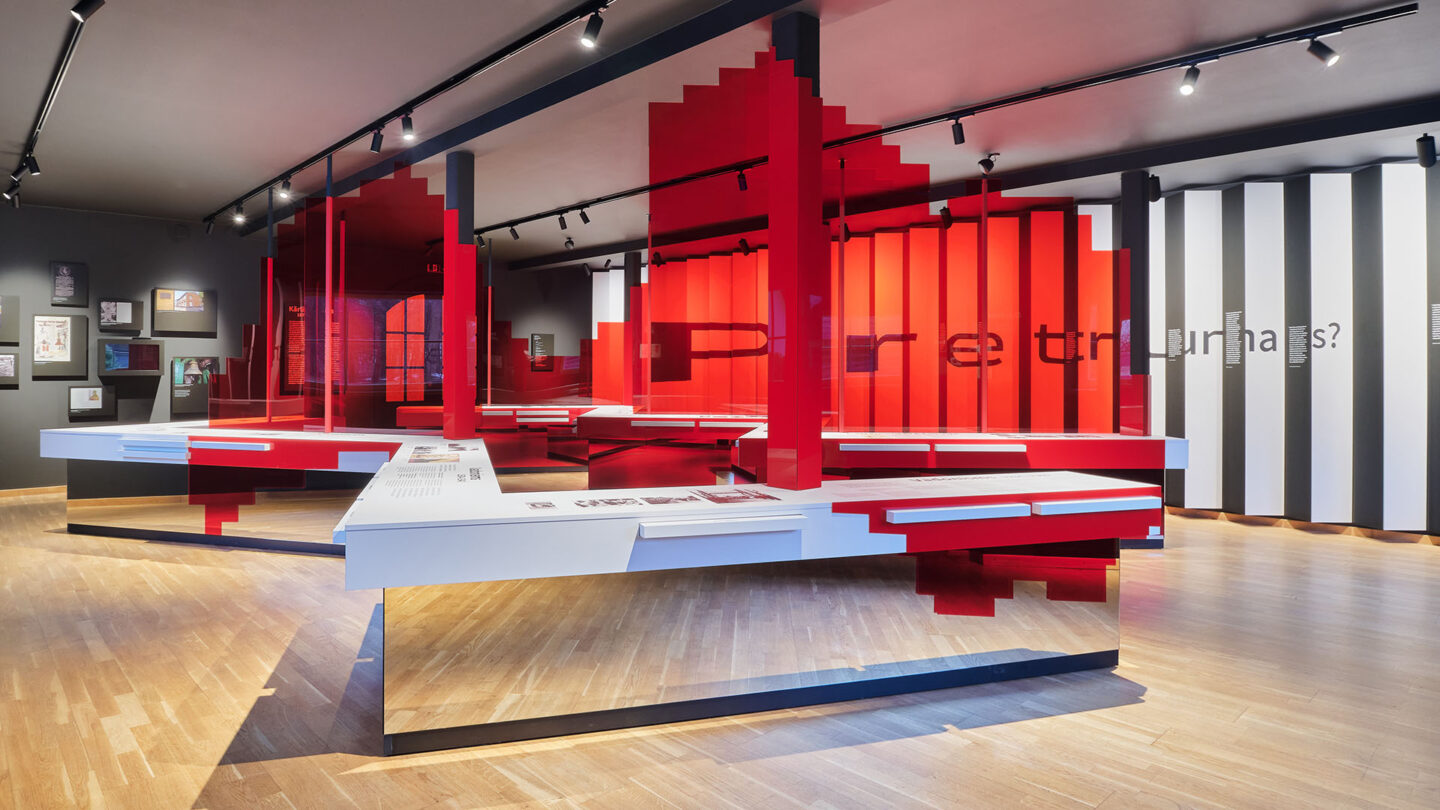Contradictions
The exhibition is based on the idea of the subjectivity of perspective, its meaning within society and the opportunity for people to develop and offer their opinion.
Agency
Design Studio H2E
Practice Area
Client
State Technical Supervision Agency, Mandated client: Kārlis Ulmanis Museum “Pikšas”
Industry

The Challenge
Located in the Latvian countryside, in a typical farmstead, the Pikšas Museum preserves the memory of the family of the former President of Latvia Kārlis Ulmanis. Today, public opinion views Kārlis Ulmanis in a controversial light, because although Latvia achieved economic prosperity and social welfare improved under his leadership in the 1930, this happened under his authoritarian regime and censorship. Therefore, the project’s challenge was to create an exhibition that precludes the glorification of a single viewpoint. The solution was to base it on research specifically conducted for the exhibition into Kārlis Ulmanis and his authoritarian regime in Latvia shortly before the Second World War.
Project Vision
The biggest benefit of the exhibition lies in the fact that the exhibition space prompts visitors to follow research, dispel myths and continue an open discourse, as well as encouraging reflection about processes within contemporary society. This dialogue contributes to the well-being of society. A unique experience awaits visitors arriving at this remote rural farmstead. Here, they are prompted to consider important questions about the role of personality in shaping history, and individual choices, not merely directed by personal ambitions, but which can shape the destiny of a country and an entire people. The rural landscape is exactly as it was in Ulmanis’s lifetime, providing a thought-provoking and sensory experience for visitors. A popular destination for schoolchildren’s and students’ educational excursions helping to develop their discussion skills and learn to accept different opinions.

Anna Olsen

Anna Olsen
Design + Execution
Step by step, 10 subjects reveal facts about the politician’s life and decisions in the context of Latvian history. The exhibition’s essence “Contradictions” is expressed using visual means edges and turning points accented within the space. Angular forms are inspired by the politician’s ambiguous personality, revealed through the exhibition’s contents, prompting visitors to ask questions about decisions that shaped history. The zig-zagging lines of the exhibition’s elements alternate with semi-transparent planes and mirrors, distorting the sense of the real space. Interplay with the rural landscape so important to Ulmanis is created by window reflections on vertical planes. The exposition is designed in a human-centric way the visual form directly triggers individual reflections and allows for an individual evaluation of the issues discussed in the exposition. The community was involved in development stage, stereotypical criticism and glorification of this influential politician are alleviated by the fragments of essays written by various specialists. Functionality is provided by the layout of the content in a clear and understandable graphic system. The graphic hierarchy reveals itself on various levels – the main events, facts and photographic materials are arranged on a central surface, while additional information can be obtained from retractable plaques. Integrated in a table showcase, the only exhibit is a small photograph of a building that was Kārlis Ulmanis’ final imprisonment place in exile in Siberia. Anamorphous approaches nurture opinions and debate, highlighting that nothing is unequivocal – only black or white. In Latvian, the word “Pretrunas” means Contradictions, alluding to the exhibition’s content and directly provoking thought and discussion. As a reward for visitors for their in-depth interest a contour of Latvia meets the eye at the perfect moment, begging the question of what the Latvian State meant to Ulmanis and each of us. The space is accompanied by a specially created audio composition.

Anna Olsen

Anna Olsen

Anna Olsen

Anna Olsen

Anna Olsen
Project Details
Design Team
Ingūna Elere (creative director)
Mārtiņš Vītols (designer)
Holgers Elers (designer)
Ieva Timoško (graphic designer)
Dagnija Andersone (project lead)
Linda Rudzīte (project manager)
Baiba Grīnberga (content coordinator)
Design Studio H2E (physical fabrication)
Collaborators
Kaspars Zellis (researcher, content)
Marta Leimane (content)
Kristaps Krievs (composer)
Ilga Ķipsne (museum director)
Inese Zandere (writer, author of an essay)
Inese Putniece (psychotherapist, author of an essay)
Pēteris Krilovs (film director, author of an essay)
Photo Credits
Anna Olsen
Open Date
January 2023




